Why the MATCH List Was Created & 3 Tips to Avoid It
January 22, 2023
What Is a High-Risk Merchant Account?
April 30, 2023What Does The MATCH List Mean?
If you’ve just found out that your business has been placed on the MATCH List, you likely have a thousand questions running through your mind. Getting placed on the MATCH List is essentially being blacklisted as a small business and can have devastating consequences. Luckily, it doesn’t have to stay that way. There are ways to get off MATCH and move on from this nightmare. Keep reading to learn more about the MATCH List, how you may have been placed on it, what it means for your business, and how to get off MATCH once and for all.
What Is The MATCH List?
MATCH stands for Member Alert to Control High-Risk Merchants and is a merchant blacklist previously known as the Terminated Merchant File (TMF). According to BankCardUSA, it was created by MasterCard, and it’s a central resource for acquiring banks, also known as merchant service providers, to flag businesses who have had merchant accounts closed for a variety of reasons, including excessive chargebacks, excessive fraud, PCI non-compliance, closing an account with a negative balance, illegal activity, or otherwise violating credit card processing agreements. Acquirers must be certified with MasterCard’s MATCH program before they can access the database to make risk-based decisions about boarding a new merchant or adding a merchant to it for one of thirteen reason codes.
How Did I Get On The MATCH List?
As mentioned, businesses get placed on the MATCH List due to at least one of the thirteen reason codes. Some of these reason codes can be broken at no fault of your own. However, there are ways to prove that you have remedied the rule breakage to get off of MATCH.
The thirteen reason codes are as follows, according to Mastercard themselves:
- Account Data Compromise: An occurrence that results, directly or indirectly, in the unauthorized access to or disclosure of Account data.
- Common Point of Purchase (CPP): Account data is stolen at the Merchant and then used for fraudulent purchases at other Merchant locations.
- Laundering: The Merchant was engaged in laundering activity. Laundering means that a Merchant presented to its Acquirer Transaction records that were not valid Transactions for sales of goods or services between that Merchant and a bona fide Cardholder.
- Excessive Chargebacks: With respect to a Merchant reported by a Mastercard Acquirer, the number of Mastercard chargebacks in any single month exceeded 1% of the number of Mastercard sales Transactions in that month, and those chargebacks totaled USD 5,000 or more.
- With respect to a merchant reported by an American Express acquirer (ICA numbers 102 through 125), the merchant exceeded the chargeback thresholds of American Express,as determined by American Express.
- Excessive Fraud: The Merchant effected fraudulent Transactions of any type (counterfeit or otherwise) meeting or exceeding the following minimum reporting Standard: the Merchant’s fraud-to-sales dollar volume ratio was 8% or greater in a calendar month, and the Merchant effected 10 or more fraudulent Transactions totaling USD 5,000 or more in that calendar month.
- Fraud Conviction: There was a criminal fraud conviction of a principal owner or partner of the Merchant.
- Mastercard Questionable Merchant Audit Program: The Merchant was determined to be a Questionable Merchant as per the criteria set forth in the Mastercard Questionable Merchant Audit Program (refer to section 8.4 of this manual).
- Bankruptcy/Liquidation/Insolvency: The Merchant was unable or is likely to become unable to discharge its financial obligations.
- Violation of Standards: With respect to a Merchant reported by a Mastercard Acquirer, the Merchant was in violation of one or more Standards that describe procedures to be employed by the Merchant in Transactions in which Cards are used, including, by way of example and not Cardholders, minimum/maximum Transaction amount restrictions, and prohibited Transactions set forth in Chapter 5 of the Mastercard Rules manual.
- With respect to a merchant reported by an American Express acquirer (ICA numbers 102 through 125), the merchant was in violation of one or more American Express bylaws, rules, operating regulations, and policies that set forth procedures to be employed by the merchant in transactions in which American Express cards are used.
- Merchant Collusion: The Merchant participated in fraudulent collusive activity.
- PCI Data Security Standard Noncompliance: The Merchant failed to comply with Payment Card Industry (PCI) Data Security Standard requirements.
- Illegal Transactions: The Merchant was engaged in illegal Transactions.
- Identity Theft: The Acquirer has reason to believe that the identity of the listed Merchant or its principal owner(s) was unlawfully assumed for the purpose of unlawfully entering into a Merchant Agreement.
What Does This Mean for My Business?
When you have been placed on the MATCH List, it can have devastating consequences. This is because you will not age out of the MATCH List for five years. Businesses are kept on the MATCH list for five years before the records are removed, and they can only be removed from the list within five years by the same financial institution that added them.
This means that, for five years, you can not process credit card payments or have a merchant account unless you find a processor who is willing to work with high-risk businesses. However, these processors often charge exorbitant fees and have long contracts that are very difficult to get out of should you be removed early from MATCH.
What Information is on the MATCH List?
The MATCH List is a comprehensive database. This is done to protect the banks and processors and avoid loopholes. Opening a new business under a different name, starting a new website, or somehow trying to find a way around being on The MATCH List is impossible by design. This is due to the large amount of personal information that is placed on the MATCH List. Some of this information includes:
- Business Legal Name and DBA
- Business Address
- Business Phone Number
- Business Tax ID
- Business URL
- Principal Owner Name
- Principal Owner Address
- Principal Owner Phone Number
- Principal Owner Tax ID
- Account Opening Date and Termination Date
- MATCH Reason Code
Can I Get Off The MATCH List?
Your business will age out of the MATCH List in five years, which will allow you to resume business as usual with your merchant account as if nothing ever happened. However, five years is an unreasonably long time for many people to wait. This period of time can have devastating consequences. As such, seeking early removal is highly recommended.
There are many ways to seek early removal from the MATCH List. First and foremost, reach out to the entity that placed you on the MATCH List. See if there is a way you can resolve the issue and ask for removal. Unfortunately, is highly unlikely.
Another way to seek early removal from the MATCH List is to get professional help, such as the Law Offices of Theodore Monroe.
Get Off MATCH With TFM Law
If you have found yourself on the Match List, we can help you. The Law Offices of Theodore Monroe focuses on litigation and counseling in the areas of payments, credit card processing, e-commerce, direct response marketing, and Federal Trade Commission enforcement. Last year the firm got 100% of the people who came to us off the MATCH list.
Theodore F. Monroe, Founder of TFM Law, has successfully:
- Represented merchants recovering funds from processors
- Structured processing relationships to comply with Card Brand requirements
- Drafted and negotiated contracts involving payment facilitators and ISOs
- Represented continuity merchants in compliance and litigation issues
- Fought for numerous companies in suits brought by the Federal Trade Commission and obtained excellent results for firms in the digital products, loan modification, government grant, and nutraceuticals industries
Before opening his firm, Mr. Monroe practiced law with Crosby, Heafey, Roach & May (now Reed Smith LLP) and Lewis, D’Amato, Brisbois & Bisgaard (now Lewis, Brisbois, Bisgaard & Smith), where he defended numerous accounting and law firms in professional liability actions, and insurance carriers in bad faith actions.
Before becoming a lawyer, Mr. Monroe worked as a forensic accountant at Coopers & Lybrand, which provided him with a background in forensic accounting and financial analysis that is unique among litigators in Los Angeles. Mr. Monroe studied at Duke University Law School, achieved a BS with Honors, Accounting, the University of Kentucky, and is a member of the California State Bar and the Kentucky State Bar.




